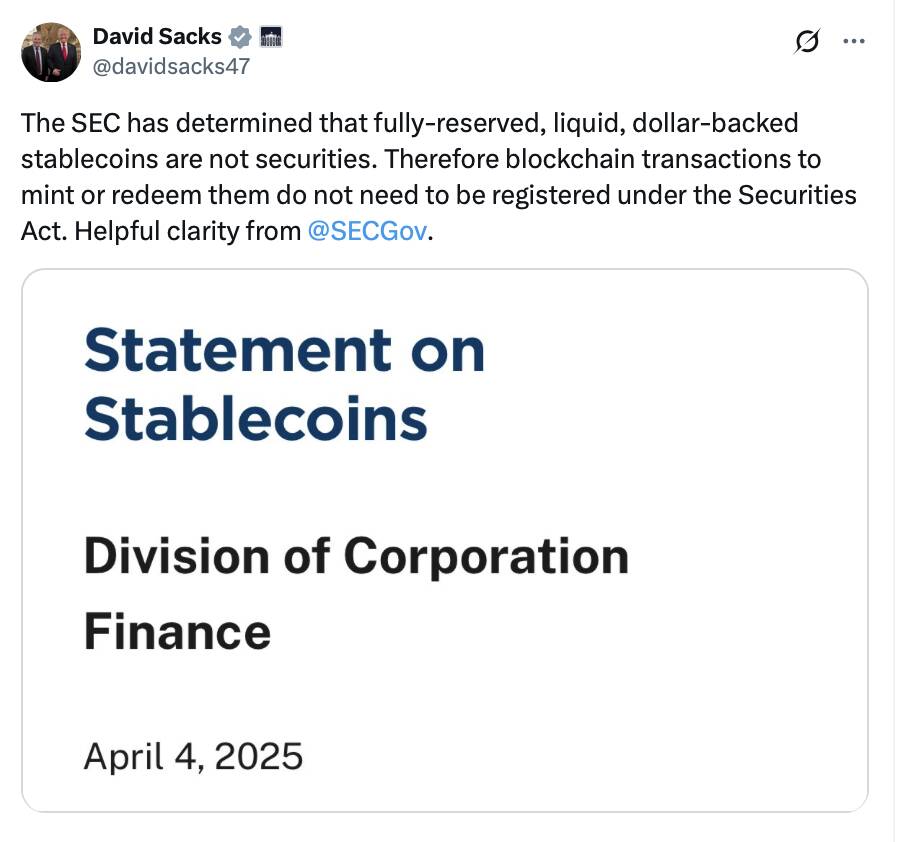The cryptocurrency landscape is currently buzzing with discussions following recent comments made by US Securities and Exchange Commission (SEC) Commissioner Caroline Crenshaw. Known for her critical stance on cryptocurrencies, Crenshaw has raised concerns regarding the SEC’s newly published guidelines on stablecoins, accusing the regulator of misrepresenting the state of the USD-stablecoin market. Her statements come at a time when many in the crypto industry view the SEC’s decisions as progress, offering a glimpse into the ongoing complexities of cryptocurrency regulation.
“The SEC’s statement on stablecoins contains legal and factual errors that paint a distorted picture of the USD-stablecoin market that drastically understates its risks,” said Crenshaw.
According to the fresh guidelines, certain stablecoins are classified as “non-securities,” freeing them from transaction reporting requirements. While this may seem like a positive change for the crypto sector, Crenshaw has countered that the SEC’s reasoning is flawed, particularly regarding the notion that issuers can manage unlimited redemptions merely because reserves match the supply of stablecoins. She points out that this simplification overlooks broader financial health and risks associated with the issuers, especially in volatile market conditions.
Crenshaw’s assertions illustrate her belief that essential risks are being ignored, especially given her insistence that over 90% of USD-stablecoins are typically accessed through intermediaries rather than directly from their issuers. This discrepancy raises questions about the stated reliability of these digital currencies.
“The issuer’s overall financial health and solvency cannot be judged by the value of its reserve,” Crenshaw emphasized.
Despite Crenshaw’s criticisms, optimism abounds in the cryptocurrency community. Industry leaders, such as Ian Ballina, the founder of Token Metrics, believe that the new guidelines represent a crucial shift towards focusing on what truly matters in the crypto domain. Others, like Tan Tran from Vemanti, express regret that this movement toward clarity has not occurred sooner, suggesting that the regulatory landscape could have benefited from such guidance years ago.
Overall, these developments underline the tension between regulatory perspectives and the aspirations within the cryptocurrency sector. As the debate continues, the future of stablecoins and their regulation remains a hot topic, particularly in light of recent audits of prominent stablecoin issuers like Tether, which aim to uphold assurances about their reserves.
SEC Guidelines on Stablecoins and Industry Reactions
The recent developments regarding the SEC’s stance on stablecoins are significant, impacting both regulatory frameworks and the crypto market. Here are the key points to consider:
- Crenshaw’s Critique of SEC Guidelines:
- Commissioner Caroline Crenshaw has accused the SEC of underestimating risks associated with the USD-stablecoin market.
- Claims the SEC’s statement contains “legal and factual errors” that misrepresent the state of the market.
- New SEC Classification:
- Some stablecoins are classified as “non-securities,” exempting them from certain transaction reporting requirements.
- This classification may lead to increased market participation and innovation within the crypto space.
- Importance of Intermediaries:
- Crenshaw highlighted that over 90% of USD-stablecoins are primarily distributed through intermediaries, which affects how they are perceived in terms of risk and availability.
- Market Optimism and Criticism:
- Industry figures like Ian Ballina and Tan Tran view the SEC’s decision as a positive, albeit delayed, step for crypto regulations.
- Some stakeholders in the crypto industry wish the SEC had taken these steps sooner, indicating a demand for clearer regulatory guidance.
- Risk Assessment:
- Crenshaw warned that the issuer’s reserves do not necessarily guarantee their ability to handle unlimited redemptions.
- Highlighted the need for comprehensive understanding of the liabilities and risks associated with stablecoin issuers.
- Impact on Users and Investors:
- Ongoing debates regarding the stability and risk of stablecoins are crucial for users and investors who rely on these financial instruments.
- Understanding the risk factors may influence investment decisions and trust in stablecoins.
Crenshaw stated, “The issuer’s overall financial health and solvency cannot be judged by the value of its reserve.” This emphasizes the critical need for transparency and rigorous scrutiny of stablecoin issuers.
Exploring the SEC’s Controversial Stablecoin Guidelines
The U.S. Securities and Exchange Commission (SEC) finds itself at a crossroads with its recent stablecoin guidelines, a development that has ignited a heated debate among regulators and those within the crypto community. While Commissioner Caroline Crenshaw has voiced her strong dissent regarding what she perceives as an underestimation of risks accompanying stablecoins, many market participants feel optimistic about new regulatory clarity. This polarizing perspective underscores the complexities of the evolving cryptocurrency landscape.
Competitive Advantages: On one hand, the SEC’s recent guidelines designate certain stablecoins as “non-securities,” potentially alleviating them from burdensome transaction reporting requirements. This move has been celebrated by various crypto leaders as a sign of progress, with industry figures like Ian Ballina highlighting the focus on significant factors within the sector. By establishing a framework that recognizes stablecoins as part of the broader financial ecosystem, the SEC might foster innovation and attract institutional interest, which is critical for the growth of this market.
Competitive Disadvantages: Conversely, Crenshaw’s criticisms point to the SEC’s potentially misleading portrayal of the stablecoin market and its risks. By neglecting significant aspects like the dependence on intermediaries and the inherent liabilities tied to stablecoin issuers, the SEC may ignite regulatory backlash or skepticism about its oversight capabilities. This position might inadvertently create a sense of uncertainty among investors who are now relying on the validity of a regulatory framework that has not been thoroughly vetted. Such a divide can undermine confidence, particularly in a market that thrives on trust and transparency.
Stakeholders in the crypto space, especially retail investors, stand to benefit from clearer guidelines; however, they may also encounter challenges due to the risks that remain downplayed in the SEC’s statements. The mixed sentiments circulating within the crypto industry reveal a community eager for legitimacy but wary about the persistent volatility associated with stablecoins. As the SEC attempts to diversify its regulatory stance, it must tread carefully to avoid alienating both industry proponents and skeptics, ensuring that investor protections are not overlooked amidst the push for innovation.
Furthermore, as Tether engages a reputable accounting firm to audit its assets, concerns about transparency and accountability in the stablecoin sector may come to the fore. The interplay between regulatory clarity and inherent market risks could have repercussions for issuers and investors alike, underscoring the need for continued dialogue and refinement in the regulatory landscape.

















